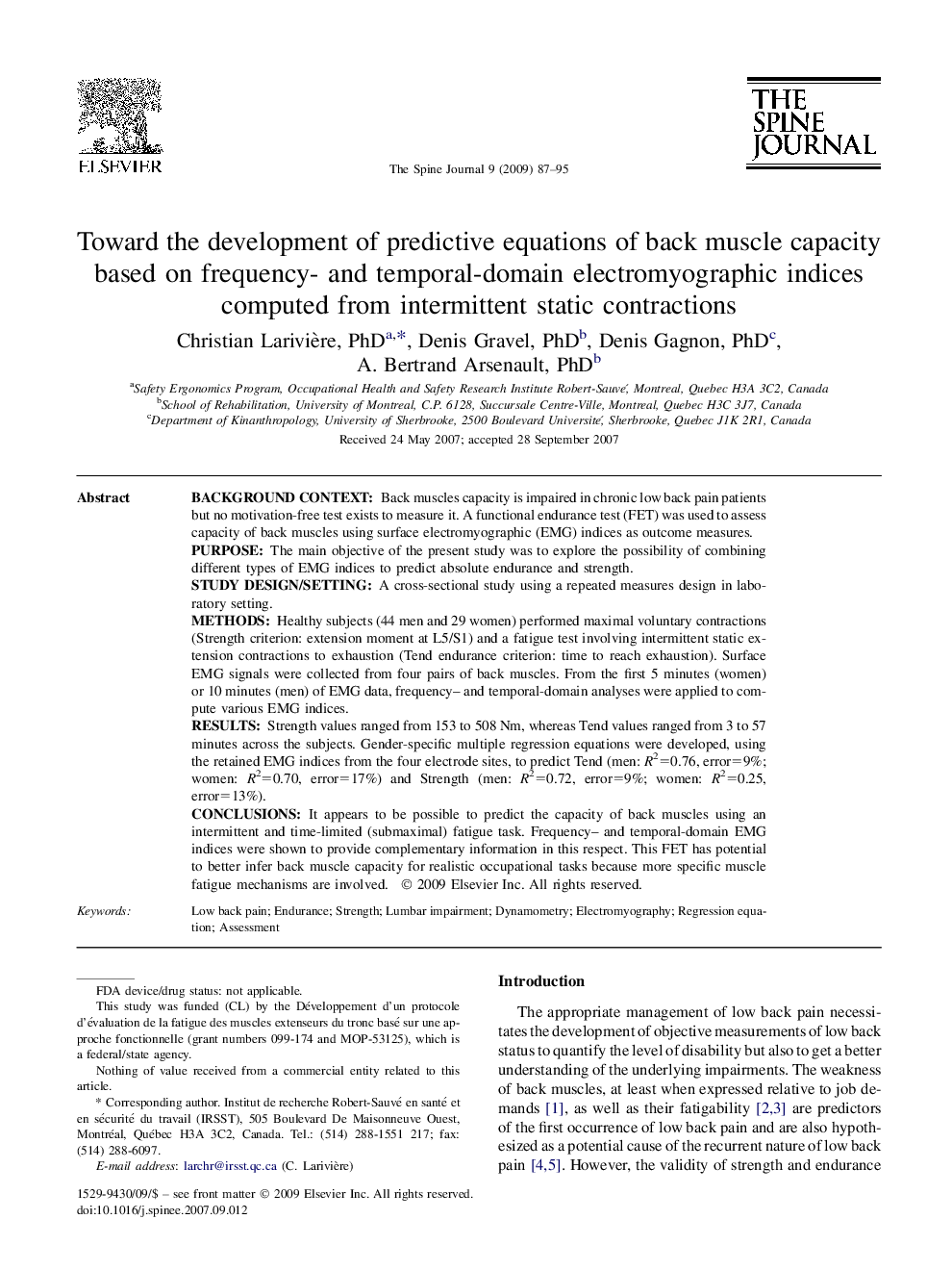| Article ID | Journal | Published Year | Pages | File Type |
|---|---|---|---|---|
| 4099073 | The Spine Journal | 2009 | 9 Pages |
Background contextBack muscles capacity is impaired in chronic low back pain patients but no motivation-free test exists to measure it. A functional endurance test (FET) was used to assess capacity of back muscles using surface electromyographic (EMG) indices as outcome measures.PurposeThe main objective of the present study was to explore the possibility of combining different types of EMG indices to predict absolute endurance and strength.Study design/settingA cross-sectional study using a repeated measures design in laboratory setting.MethodsHealthy subjects (44 men and 29 women) performed maximal voluntary contractions (Strength criterion: extension moment at L5/S1) and a fatigue test involving intermittent static extension contractions to exhaustion (Tend endurance criterion: time to reach exhaustion). Surface EMG signals were collected from four pairs of back muscles. From the first 5 minutes (women) or 10 minutes (men) of EMG data, frequency– and temporal-domain analyses were applied to compute various EMG indices.ResultsStrength values ranged from 153 to 508 Nm, whereas Tend values ranged from 3 to 57 minutes across the subjects. Gender-specific multiple regression equations were developed, using the retained EMG indices from the four electrode sites, to predict Tend (men: R2=0.76, error=9%; women: R2=0.70, error=17%) and Strength (men: R2=0.72, error=9%; women: R2=0.25, error=13%).ConclusionsIt appears to be possible to predict the capacity of back muscles using an intermittent and time-limited (submaximal) fatigue task. Frequency– and temporal-domain EMG indices were shown to provide complementary information in this respect. This FET has potential to better infer back muscle capacity for realistic occupational tasks because more specific muscle fatigue mechanisms are involved.
